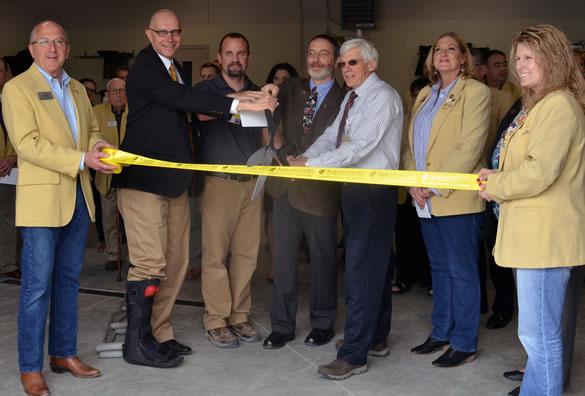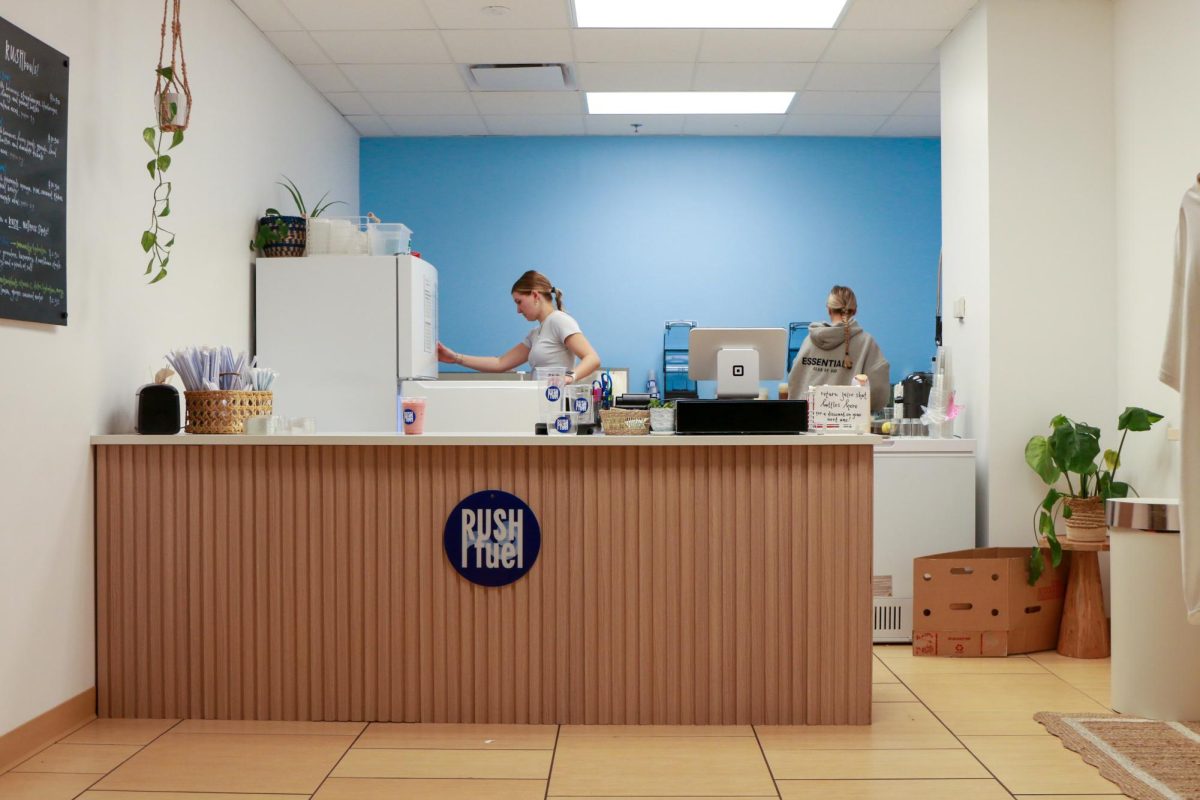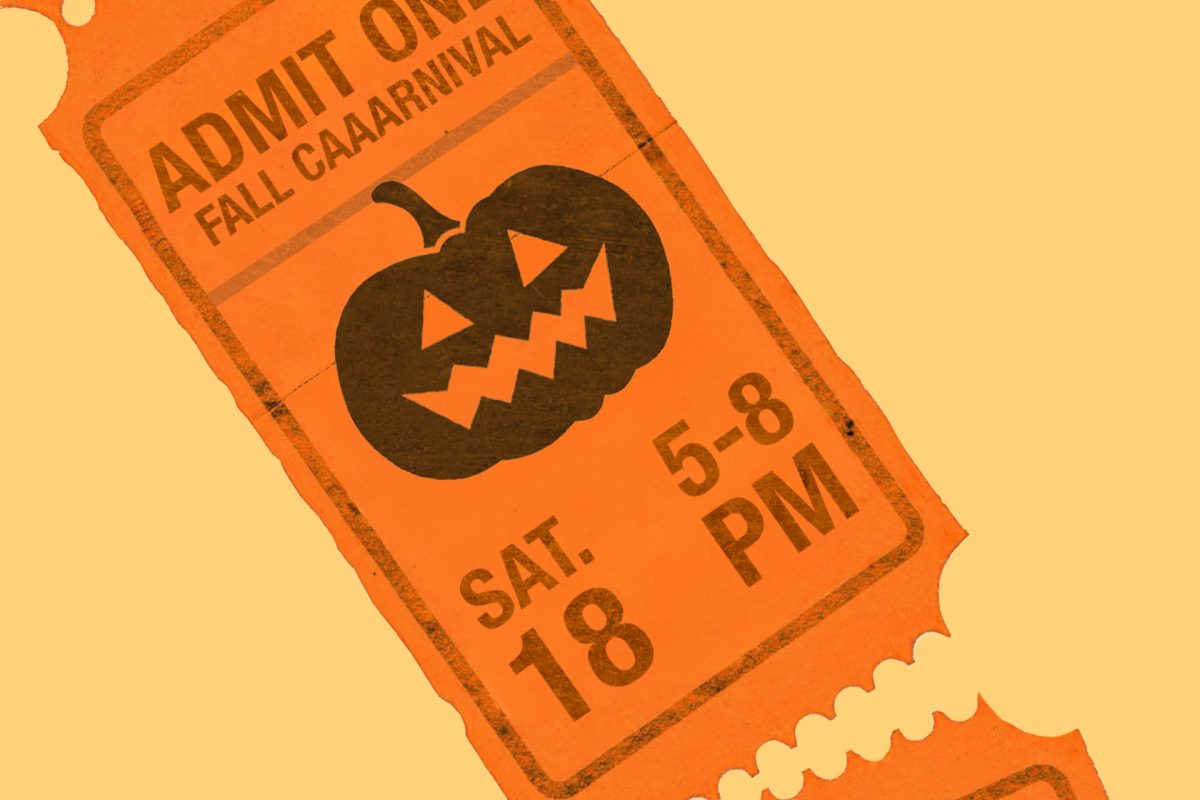MU Veterinary Health Center faculty, administrators and community members gathered for the ribbon cutting for the new Large Animal Ambulatory Facility on Friday.
The new facility, which provides services for horses, food and fiber animals, includes seven individual offices, a shared office, a multipurpose classroom and a garage that can hold six ambulances.
“We have managed since we built Clydesdale Hall with everything parked outside, but this makes things much easier to deal with and much more efficient to stock the vehicles, and it gives us the teaching space that we didn’t have before,” said John Middleton, professor of food animal medicine and surgery.
The original plans for Clydesdale Hall included a garage for those vehicles, Middleton told the crowd of several dozen people. But he said that due to funding shortages, it was never built.
The new $2.5 million facility was funded over four years by an appropriation for large-animal education from the Missouri Senate and House Agriculture Committee.
“[The teaching space] can also be used on evenings and weekends to put on continuing education meetings for farmers, but also veterinarians,” Middleton said. “So not only are we teaching veterinarians as they come through the veterinary school, we have the capacity now to do some teaching over in this facility for people who are already in practice, and also put on some continuing education programs for farmers in close proximity to the place that they bring their animals to.”
The legislative funds also provide funding for travel grants for students and allowed for the recent hiring of an extension veterinarian who will work with swine.
“We’re also funding a number of educational initiatives including internship and residency training programs and travel grants for our veterinary students to go beyond campus to gain experiences relevant to rural veterinary practice,” Middleton said. “Part of the money is used to help those students gain experiences without incurring more debt because vet students already carry a lot of debt.”
In the past, the school’s five emergency vehicles were parked outside, and students had to walk out to reach them. Now, the facility gives students a nicer work environment and “allows us to get to our clients quicker,” Middleton said.
Six faculty and seven interns and residents are currently housed in the new facility.
“Before, faculty were very crowded and really didn’t have much office space anymore across the street [in the veterinary hospital],” Associate Department Chair for Internal Medicine Leah Cohn said. “We were doubled up, which made it hard to talk to students if you wanted to have a private conversation with a student who might be doing badly in a class.”
The Large Animal program has provided medical and surgical care for animals in the region for nearly seven decades, according to a news release.
“Another thing that you probably recognize is that we’ve got a shortage of veterinarians in rural areas, so one of our initiatives as a college is to try to increase programs, which will hopefully train people who are interested in practicing in rural areas, and our ambulatory program is a big component of that,” Middleton said.
_Edited by Kyle LaHucik | [email protected]_








